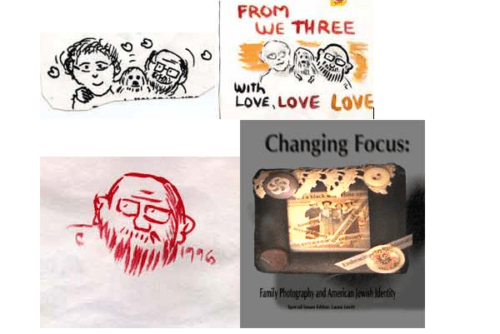Introduced by the Wham-O® company in 1958, the Hula-hoop® filled the playtime of millions of mid-twentieth-century American children who tried to get the hoop rolling nearly effortlessly around their waists using a Hawai’ian-style hip swing (and sometimes giving up on that and instead jumping through it, rolling it, and using it for modified forms of hopscotch). The hoop-as-toy was for play and frolicking, with no real endpoint. Hula-hooping®, though, is no longer just for kids: it’s the new “exercise sensation” (www.hoopnotica.com), competing with Zumba®, hot yoga, the ominous sounding “boot camps” of various types, and Yogalates™ for the time and money of middle-class American women interested in fitness and self-improvement. Branded as an exercise product, “Hoopnotica®’s advocates have measured hula-hooping’s health payoffs against those of other “cardio” activities, and linked them with the supposed spiritual and mental benefits of a hard hooping session. Like other contemporary exercise activities for women, “hooping” is pitched as a scientifically-based practice that wards off future ailments and helps users lose mass via a hard “workout” that is also a whole lot of fun.
The fun that women are supposed to be having while “working” is a critical subjective experience that helps to gender, embody, and normalize a type of ideal neoliberal citizen. Like any type of political economy, neoliberalism takes many forms, depending on geography and historical period, and on its forms of deployment and subjects. Neoliberalism’s basic contours—the offloading of risks from government to individuals, the extensive financialization and privatization of all manner of life experiences and material things, and punishments for those who fail to manage risks—are grounded in ideologies that value individuals over groups, and in winner-take-all systems that disproportionately affect the lives of women and the poor.1 The emotional landscape that undergirds and infuses these new arrangements is complex and specific to particular groups, but especially to gendered groups. No form of subjectivity is ever totalizing or utterly consistent, yet the emotion-worlds attached to political economy do have patterns that encourage citizens to normalize extant arrangements. To get at this set of arrangements, I analyze the emotion-world of women’s “exercise” since the 1980s.
This world emerges from the scientized individual exercise and eating practices that emerged in the 1970s, which routinized continual self-monitoring to a greater extent than was the case in previous generations. This self-help and self-improvement culture was lashed together in the 1980s—but especially in the 1990s—with economic language that valorized the entrepreneur as the ideal economic actor. Knowing about and acting on future risks; being habituated to “pre-conditions” that demand action and money (pre-hypertension, pre-diabetes, peri-menopause);2 endlessly seeking opportunities for “investing” in the self, and encountering demands for continual production in the workplace and of the self—all of these are components of the emotion-world of neoliberal citizenship.
Yet, calls for vigilance, sobriety, and forethought in the face of potential catastrophic and short-term health problems are not to be simply understood in terms of fear and uncertainty. Fear is only one emotional pole that helps to explain how neoliberalism becomes normalized. Pleasure, excitement, and fun are the other elements of the emotional landscape of neoliberalism, particularly for women in the “striver” classes. Taking pleasure in risk, uncertainty, and the calculation of risk, the ideal neoliberal citizen is an entrepreneur, enjoying assessing future risks and payoffs, endlessly seeking new opportunities for consumption(s) of food and attendant advice and practices, and enjoying the constant production of the self in order to avoid future harm and maximize payoffs. Yet the insidiousness of neoliberalism’s ability to work, emotionally, is not the result of scientific and economic abstractions in insurance rules or retirement accounts. It is, I argue, a deeply tied to the embodiment of neoliberalism in food and exercise practices and emotions, particularly for women.
The Striver Class and the Exercise Class
The “striver class” includes what were formerly known as the working-to-middle classes, but who are now reconfigured and defined by their mobility aspirations. Movement, dynamism, and consumption for improvement characterize the ideal neoliberal citizen. Losers stand still and expect to do the same job over and over again, to make one-time investments in a house or a car; the entrepreneurial citizen does much more—she looks for opportunities to “invest” in the self, to improve it, and to publicly demonstrate these commitments.
The neoliberal deportment of the striver classes is characterized by an assumption that morphology and all other features of the self are malleable, and can be changed through calculative practices that join together, in the body and the mind, an array of endlessly changing set of scientized, but for women, supposedly emotionally satisfying technologies, including food, “nutraceuticals,” machinery and equipment, “information,” clothing, and commodified and organized movement activities like Hoopnotica®. One may never reach a state of “beauty” or “health;” indeed, it would be an oxymoron for the striver classes simply achieve a plateau and stop there.
Compare the striver to the post-World-War-II ideal worker: far from stodgy workers repeating the same activities day after day, the striver classes are enmeshed in cycles of endless pleasure-seeking and investment in various parts of the self in order to signify mobility, if not to actually achieve it. Body-making projects such as nourishment or weight maintenance are increasingly expected to be joyful. No longer called upon to produce a state of health, women in particular are supposed to be involved in the continual production of “wellness.” Wellness is a physical, emotional, and “spiritual” positioning in a world of risks and benefits. Negativity and pessimism are frowned upon;3 active choices—to surround oneself with happy people, to enjoy the “burn” of work(outs), and to mix (embodied) productive activity with leisure and pleasure—are encouraged. Above all, the labor of producing a body is turned into “fun,” mirroring the much-vaunted “fun” Silicon Valley workplaces where basketball games, impromptu parties, and music obscure extractive labor processes. The open-endedness of economic and bodily activity—who knows whether we will fail or succeed?—under neoliberalism are not meant to be matters of grave concern but opportunities for pleasurable investments.
For striver-class women, “fun workouts” are to be public and personal. Women in the bourgeoisie, however, such as the readers of Town and Country and Vogue magazines, are not encouraged to engage in public, calculative body production. For these women, body-production labor is invisible: personal assistants discretely check the menu at a restaurant or social event and provide clients with a list of exactly what to eat before they arrive. Private trainers work with women inside the home, not at gyms or in other public settings. While the production process is publicly invisible, its products—glowing skin, toned bodies, and a serene state of mind—are visible. It would be, to say the least, déclassé for bourgeois women to be seen in a gym or to chatter about one’s “workout.”
To illustrate these ideas, I use images and copy from Prevention magazine—the seventh-best-selling magazine in the world, and the leading health magazine for women in the United States—and the websites of the Zumba®, Hoopnotica® and Yogalates® “workout” systems. In this brief essay, I emphasize two central patterns: the formalization of worlds of play and experiment into worlds of embodied and emotional discipline, and the call for endlessly revised investments in the embodied self, via “changing up” routines and learning to see inputs as fungible.
Hidden Production: Body Labor as Play and Emotional Contentment
At first glance, Hoopnotica® looks, well, dreamy. One might imagine swaying gently and rhythmically, lulled into a peaceful and half-sleepy state, perhaps in a park or backyard. The “notica” part of the brand name, however, is not, in fact, a call for that sort of contemplative and personal experience. Warnings abound on the Hoopnotica® website. Reminding those signing up for the Los Angeles classes—“[n]o lycra catsuits or satin flamenco dresses (the hoops slip). We mean it—You know who you are!”—the website makes it clear that this kind of play won’t involve one’s own fantasy, but the emotional fantasy of the instructor. Similarly, one cannot bring one’s own childhood hoop to class; that kind of hoop is considered an inappropriate “child’s hoop;” those sold by Hoopnotica® provide “the perfect amount of momentum and resistance for achieving the optimal cardiovascular workout.”4 Yet Hoopnotica® isn’t all discipline: one can engage in some fantasies, including being on “the runway.” Selling for $469.99, the “Runway Kit” includes leather mini-hoops, a velvet hoop sleeve, and gloves, among other items. The “kit” by definition offers a limited form of play.
This mix of body production work and structured playfulness is similar to the kind of body and emotion work that models must undertake, not for “fitness” or “leisure,” but to find jobs and to market modeling itself. As Wissinger documents, leisure activities, particularly at parties, bars, and nightclubs, are a form of work for fashion models.5 Cultivating one’s image at sites and times normally reserved for fun makes work and play more seamless, simultaneously obscuring labor relations, and constraining the imagination, just as “fun” exercise is meant to obscure the work of making a body, and to limit the range of emotions that can be plausibly expressed.
Yogalates™, like Hoopnotica®, offers a mix of highly structured body production, but with the emotional benefits of spiritual satisfaction and a sense of ill-defined “wellness.” “Yoga,” the site tells us, “can enhance strength, stamina, flexibility, balance and mental clarity. Through developing a conscious awareness of the body, mind, breath and life force (prana) it has the ability to be deeply relaxing and health enhancing.” It is twinned with Pilates, a system developed by founder Joseph Pilates that works by: “stabilising muscles (namely the deep abdominals) and resistance work (initially through springs attached to hospital beds) […] It is known globally as a system of muscular skeletal exercises that augment sporting activities, assist in injury rehabilitation and supports those with back problems through re-educating the body’s postural muscles to create a very safe and strong foundation for movement.”6 Pilates is not offered up as a spiritual practice, but it is yoked to the Americanized version of yoga-for-fitness with a veneer of connection to the divine and spirit worlds. It is important to note that Pilates uses a machine called “the reformer,” essentially a bed with pulleys, weights, and springs attached, much like the hospital bed from which Pilates rebuilt his health.
Here, again, we see the mix of body discipline—indeed, “reform”—paired with a particular emotional deportment that makes the challenging labor of Pilates exercises and the yoga asanas into a satisfying emotional experience. “The eight limbs of yoga are implemented,” the website tells readers, “making it a holistic approach which aims to bring about balance and unity in body, mind and spirit.” It is worth noting that this combination of labor and emotion had to be learned by Americans: in the 1970s, Prevention magazine devoted many pages to helping readers understand that photography outings and gardening were forms of exercise, and helping them to figure out just how to dress and behave while engaging in leisure-exercise. Today, some web, government, and iPhone calorie calculators include calorie counts for prayer, bringing spirit and body production together into a scientific calculus.
The gendered consequences of this obfuscation are significant. Playfulness and spiritual experience can be ways to explore feelings and thoughts that we have little time to explore, that we fear, or that are emergent and immanent. Imagining a new set of physical, emotional, and social experiences is a critical element of a democratic politics, and thus, not surprisingly, the direct suppression of art, music, poetry, writing, and the like has been used to squelch these creative activities, particularly those which teeter on the edge of fantasy and reality. Even more insidious is the channeling of imagination, fantasy, and spiritual life through the body, where they are materialized as disciplined and shaped by rules.7 Free-floating, ecstatic, or kaleidoscopic embodied experience is not encouraged by these new exercise programs, despite their promises of fun and spiritual well-being.
I want to suggest that there is continuity between the constrained forms of fun, play, and spiritual satisfaction that women are asked to learn through leisure-exercise and long-standing expectations of femininity as playfulness. Women learn how to avoid being serious and threatening by making their demands light-hearted and learn to use their bodies to be silly and childlike: lowering the head, smiling, etc. They are, of course, ridiculed for this very same quality. The constrained play of new forms of women’s exercise is an extension of this same expression of femininity—necessary, but not built entirely on authentic experience, and obfuscating the channeling of emotion.
It is worth noting that the entrepreneurs and teachers who run these “excer-fun” programs create themselves as products which are composed of embodied and emotional elements that are for sale. One cannot purchase the teachers’ or the founders’ bodies per se, but as with models, we are offered images of the happy entrepreneur who enjoys working (out). Jane Fonda’s Jazzercise® was among the earliest to offer this kind of exercise package (and was a step in redeeming herself as an everywoman rather as the militant radical), and her formula is widespread today. Using personal testimony and metascientific claims, entrepreneurs document their own and others’ success, bearing witness as charismatic figures who offer an evanescent form of “well-being” that must be reproduced over and over again. These entrepreneurs are products in themselves, selling not only the exercise and the experience, but themselves as live examples. Their products are also material things, including bodies and the means of producing them (DVDs, etc.). One can purchase the right to do the very same thing by opening one’s own studio.
There is nothing new about the sale of health promises; what is new under neoliberalism is the flourishing of the sale of emotionalized body discipline that is spread, web-like, through a franchise that encourages new people to spread these practices—at a price. The web of embodied women at work-play, endlessly producing but never reaching a goal, represents one form of the idealized neoliberal citizen: the consumer-entrepreneur who is always reinvesting, seeking forms of satisfaction, looking for opportunities, but who is lacking the kind of aggression and 1980s-style fem-masculinity expected of the new businesswoman. This version is indeed always producing, but she is peaceful and cheerful, not aggressive—a feminized version of the striver classes.
Changing it Up!
Up until the late twentieth century, most American exercise and diet plans were strictly formulaic: particular sets of exercises and groups of food were given, and one followed the plan.8 Weight Watchers began to change this to some extent; turning food items into fungible units called “exchanges,” which allowed participants to choose which foods they would eat to fulfill their daily allotment. This technique allowed the mostly female participants in the program to participate in dieting as a personal, yet technically mediated act.9
Today, diet, exercise, and health sites, in print and other media, have taken this “personalization” of technical information to a new and quite remarkable form: the call to always be on the lookout for and apply new ways of exercising and new foods to eat. A visit to any gym will reveal new classes of all kinds: combining bicycling and weight lifting, swimming and ballet, or weightlifting and yoga. Posters and advice from trainers and teachers are one way advice to never stick with one thing is conveyed, but so, too, are the magazine stories and guides that adorn the bulletin boards and walls. Doing sit-ups to build up your abs? That’s the old way. The new ways to build what is now called “core strength” are… Don’t get too comfortable with that method. Once you’re settled on one, you can be sure another will be offered soon enough. To be sure, not every person who sees these signs and offerings takes them up. But it is difficult to find many people who say that they exercise in the same way as they did 15 years ago. Even if they stick with the same sport—say, bicycling—they are very likely to have modified their activities to keep up with the latest information.
A brief overview of these calls to exchange one kind of thing for another, and to keep changing can be seen on any branded exercise site; Hoopnotica® and Yogalates™, for example, constantly change their DVDs and forms of movement. (Being “bored” from exercising in one way is not natural, but rather, it is something learned. People have done the same forms of Qi Gong for centuries without complaints about boredom, for example.) Above all, applying new ways of improving the body is fun. It began to emerge in the 1980s, marked by an exclamation point. The exclamation point is a signifier of excitement and surprise, and its spread helps to illuminate the way that a sense of future and joy came became more frequent. In 1981, the exclamation point appeared twice in Prevention magazine. In 2012, it appeared in copy or advertising an average of 23 times per issue. In the magazine, fears about health are mixed with the fun of seeking out ways to improve it. Thus, dourness about dieting, and fears about health—which are rarely motivating for very long—are now minimized, and appear alongside significations of pleasure and literal EXCITEMENT! about new health and exercise news. Yet this news, as I suggested earlier, does not appear as a single set of advice.
It appears as a set of combinatorial and commensurative practices that lead people to see commodified scientific ideas as unstable, endlessly changing, and personalizable. Calls for commensurative and combinatorial practices first appeared on the pages of Prevention in the early 1980s, using the language of neoliberal investment and ownership. Titles such as “Subtracting Additives Multiplies Your Health Account,” and “Now There’s An Owner’s Manual for the Most Valuable Thing You Own [your body],” told readers that their bodies were property to be managed.10 To do so, one was exhorted to use combinatorial and numericized nutritional methods, in which one would take ideas, commodities, and foods, and learn how to mix them together using various forms of calculation, in order to arrive at new formulas that were both scientific and personal.
Contemporary stories tell readers the same thing, but with a new formula first introduced in 1981 by Men’s Health magazine (like Prevention, published by Rodale Press), and now ubiquitous: covers with numbers of ways to accomplish something (“Lose 5 pounds in a week!” “Ten new moves for a sexy arms!”). There is no stable body, nor is there a stable set of production rules. Every day, Prevention’s website offers new versions of this activity, offering another, better version of “wellness.” The covers beckon us with sober lists and exciting promises: “25 Look Younger Foods” appears on the same cover as “Feel Amazing Right Now!”; “65 Best Health Tips for Women” appears on the same cover as “All Day Energy!”11 It is exciting to create one’s body and health—in the sense of requiring energy and movement—and it offers surprise and stimulation! Such emotional packaging makes the work of risk management under neoliberalism that many others have documented never ending, and demands the constant consumption of new scientized and emotionally attractive commodities.12 These calls, moreover, elide three types of consuming: mentally and emotionally processing information, purchasing material things, and putting commodities into the body.
Men are, of course, called upon to do something similar, but rarely with the exclamation point or the emotional excitement expected of women. The buzzing action that women are asked to participate in is of a particular sort. The array of scientized and emotional ideas are delivered at a rapid rate, and women are expected not simply to soberly consider them, but to be excited. This excitement is about being above a ground state, stimulated, ready for action, and anticipating futures. It would be hard to find a real woman who felt this way all the time, but as Adams, Murphy, and Clarke argue, this state is one pole of a process that they call “abduction,” or the movement between pasts, presents, and futures.13 Although they emphasize that such abduction is joined with the “optimization” of futures, here I want to illuminate the gendered call is not only to look not to be quite in the present, but to enjoy being between now and the future state.
Gender and Neoliberal Embodiment
Analyses of the macropolitical causes and variations in neoliberalism have flourished over the past several decades, documenting the privatization of public enterprises; the rise of corporate “stakeholder” and self-governance mechanisms in place of official government regulations, the dissolution of welfare state responsibilities, and the infusion of profit and entrepreneurship into social institutions such as science and art.14 Political economies, however, are not merely systems of law and rule, nor are they experienced purely at the level of reason and rationality. Economies are emotional and embodied too, and they are, of course, gendered and raced.
In this short essay, I hope to have sketched out how and why neoliberalism operates at the level of emotional embodiment. Just as entrepreneurship and innovation are now valued over steady-state production, and just as women are increasingly working at paid labor and doing the unpaid care work that the decline of the welfare state has foisted upon them, “self-care” via exercise and food management are turned into entrepreneurial investments that are exciting. Like cultures of citizenship that call for continual “investment” in the self (“continuing” and “executive” education, lifelong learning, “Jesus as Life Coach,” voluntarism as generative of cultural capital, etc.), there are moral, political, and social penalties for those who fail to participate in investment and constant production activities. Yet this kind of risk taking is not, as early writers such as Beck have argued,15 infused with just fear—at least not for women in the striver classes. It is excitement and pleasure at seeking out and embodying “wellness”—that evanescent product which can never be achieved—that ties together neoliberalism and femininity at the level of the body.
- Julie Guthman and Melanie DuPuis, “Embodying Neoliberalism: Economy Culture and the Politics of Fat,” Environment and Planning, 24 (2006): 427-448. [↩]
- Joe Dumit, “Normal Insecurities, Healthy Insecurities,” The Insecure American: How We Got Here and What We Should Do About It, Hugh Gusterson and Catherine Besteman, eds., (Berkeley: U of California P, 2010). [↩]
- Barbara Ehrenreich, Bright Sided: How Positive Thinking is Undermining America, (New York: Metropolitan, 2009). [↩]
- www.hoopnotica.com, accessed on 25 June 2013. [↩]
- Elizabeth Wissinger, “Modeling Consumption: Fashion Modeling Work in Contemporary Society,” Journal of Consumer Culture 9 (2007): 273-296. [↩]
- www.yogalates.com.au. [↩]
- Benjamin Shepard, Play, Creativity, and Social Movements, (New York: Routledge, 2010). [↩]
- Harvey Levenstein, Revolution at the Table: The Transformation of the American Diet, (Berkeley: U of California P, 2003). [↩]
- Cressida J. Heyes, “Foucault Goes to Weight Watchers,” Hypatia 21.2(2006): 126-149. [↩]
- Prevention Jan. 1981: 174; Prevention June 1980: 101. [↩]
- Prevention May 2008; Prevention Nov. 2009. [↩]
- Jennifer Smith Maguire, “Leisure and the Obligation of Self-Work: An Examination of the Fitness Field,” Leisure Studies 27 (2008): 59-75; Nikolas Rose, The Politics of Life Itself: Biomedicine, Power, and Subjectivity in the Twenty-First Century, (Princeton: Princeton U P, 2009); Dumit 2010. [↩]
- Vicanne Adams, Michelle Murphy, and Adele E. Clarke, “Anticipation: Technoscience, Life, Affect, Temporality,” Subjectivities 28(2009): 246-265. [↩]
- [[FULL REFERENCE NEEDED FOR THIS ONE Hall and Peterson 2001]]]; David Harvey, A Brief History of Neoliberalism, (New York: Oxford University Press, 2005); Aihwa Ong, “Neoliberalism as a Mobile Technology,” Transactions 31(2006): 1-6; Kelly Moore, Daniel L. Kleinman, David J. Hess, and Scott Frickel, “Science and Neoliberal Globalization,” Theory and Society 40(2011): 505-532. [↩]
- Ulrich Beck, Risk Society: Towards a New Modernity, (Thousand Oaks: Sage, 2002). [↩]





